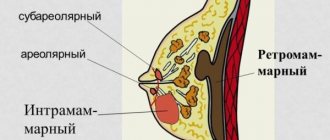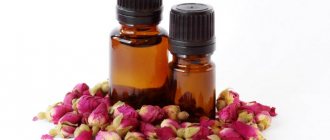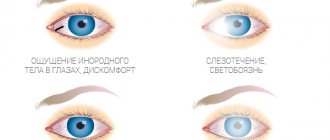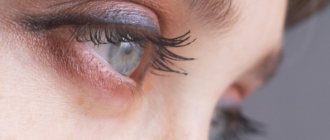Eustachitis is an ear disease that is characterized by an inflammatory process in the auditory tube. The secondary name of the pathology is tubootitis. In the presence of this disease, hearing decreases. If therapy is not started in a timely manner, serious complications may develop, including complete hearing loss.
The disease can occur in both adults and children. In order not to miss the initial stage of the inflammatory process, every person should know about its symptoms. We will consider the treatment of eustachitis and the causes of its occurrence in our article.
Causes of eustachitis
Various factors can influence the development of this disease. Many doctors agreed that the main cause of the disease is complications after any disease:
- According to statistics, eustachitis most often occurs during an acute respiratory viral infection. As a rule, pathogenic microorganisms from the nasopharynx penetrate into the ear cavity, after which the infection is localized in the auditory (Eustachian) tube;
- Complications can also occur in chronic forms of tonsillitis, sinusitis, sinusitis, and so on;
- The disease can be triggered by the presence of tumor diseases in the nasal cavity. This is due to the fact that in the presence of this disease, it is difficult for air to enter the auditory tube. This leads to a decrease in pressure in the eardrum. Thus, fluid forms in the ear cavity, which leads to inflammation.
The above reasons are the main ones. Let's consider secondary factors that can also provoke the disease:
- Improper release of mucus from the nasal passages;
- Low immunity. With this factor, eustachitis can occur with a common cold;
- Allergic reaction that is accompanied by frequent sneezing. Regular sneezing can lead to sudden changes in pressure in the ear cavity.
Tubootitis: causes of its occurrence
We have figured out what turbootitis is, all that remains is to understand why the disease appears. The condition is caused by impaired ventilation in the middle ear, which, in turn, often occurs when an infection enters from the nasopharynx or upper respiratory tract.
In general, the condition can be caused by several reasons:
- Viruses and infections: influenza, ARVI, acute pharyngitis, rhinitis, infectious mononucleosis, measles, etc.
- Deviation of the nasal septum.
- Fungal infection or specific microflora: pathogens of tuberculosis, chlamydia, etc.
- Congenital pathologies, such as cleft palate, Kartagener's syndrome, choanal atresia, etc.
- Allergies, if we are talking about allergic rhinitis.
- Chronic pathologies: tonsillitis, pharyngitis, adenoiditis, sinusitis.
- Hypertrophy of the nasal concha or, in simple terms, their enlargement.
- Sometimes the condition is caused by neoplasms inside the nasopharynx cavity.
In addition to the above, experts also note other factors:
- poor clearance of mucus from the nose during a prolonged runny nose, when the patient simultaneously blows his nose through both nostrils;
- prolonged coughing and sneezing, increasing pressure in the tympanic cavity;
- weak immunity due to chronic diseases, such as diabetes.
Symptoms of the disease
Headache is the most common symptom of tubo-otitis.
The symptoms of eustachitis in adults are practically no different from the manifestations of the disease in children. According to statistics, the disease occurs much more often in children under 7 years of age. This is due to the fact that in childhood the auditory tube is not fully formed, or rather has minimal dimensions. For this reason, the Eustachian tube in children is more vulnerable to various pathologies.
The typical patient is concerned about the following:
- Ear congestion;
Help: It can be observed in the left, right or both ears at once. In this case, the disease is called bilateral eustachitis. In some cases, hearing is normalized for a few seconds when yawning or swallowing saliva.
- Extraneous noise in the ears;
- Headache;
- Feeling of fluid in the ear cavity;
- Autophony.
The listed symptoms are the main ones. They are characteristic of the acute form of the disease. Acute eustachitis can be successfully treated with timely consultation with specialists. If we are talking about symptoms such as increased body temperature, pain in the ear, flow of fluid from the ear - these symptoms indicate that eustachitis has turned into a purulent form of otitis.
In addition to the acute form, there is chronic eustachitis. This pathology is characterized by deformation of the eardrum, its retraction or curvature. When treating chronic eustachitis, it is possible to achieve long-term remission; it is almost impossible to completely get rid of this disease.
Symptoms of eustachitis
The distance between the walls of the auditory tube is only a few millimeters. Inflammation and swelling make it impenetrable to air and the pressure in the middle ear becomes negative.
We recommend reading: Treatment of allergies
At the same time, the eardrum is retracted, which instantly affects the ability to perceive sounds.
Here are the main symptoms of eustachitis:
- hearing impairment that is constant or periodic;
- discomfort, crackling and buzzing in the ear;
- unusual perception of one’s own speech (autophony);
- when exudate accumulates in the middle ear (mucus secreted by tissues during inflammation), the patient feels a transfusion of fluid when changing the position of the head;
- yawning or swallowing may improve hearing;
- lack of nasal breathing.
An otolaryngologist will be able to identify eustachitis, as well as the causes of the disease, through a visual and instrumental examination of the nasopharynx. The main diagnostic criterion is the position and appearance of the eardrum, which is revealed by otoscopy.
Using a special probe and an air pump (tympanometry), the pressure in the middle ear is checked, as well as the presence of fluid and tumors. Audiometry, which checks the level of hearing, with eustachitis often records a deterioration in the passage of sounds of low tones.
If the doctor suspects the infectious nature of the disease, the patient is asked to take a swab from the throat cavity. Morphological changes in the tissues of the nasopharynx can be identified by undergoing radiography, CT, rhino- and pharyngoscopy. The allergic nature of edema is determined using allergy tests.
You may be interested in an article about the treatment of tubootitis with folk remedies.
There is also a useful article about surgical treatment of a runny nose.
After reading this article, you will learn how to treat a sore throat and dry cough.
Diagnostics
The diagnosis of eustachitis can only be confirmed or refuted by an otolaryngologist. To begin with, the doctor asks general questions to the patient: what worries him, what symptoms of the disease are observed and for how long, whether therapy was carried out at home. Next, the doctor examines the ear canals using an otoscope, assesses the condition of the eardrum and the patency of the auditory tube.
To identify the cause of the disease, procedures such as x-rays of the paranasal sinuses or a throat smear may be prescribed. Based on the results of the analysis, the doctor prescribes the necessary treatment. After diagnostic procedures, the doctor may detect otitis media or eustachitis.
Treatment of eustachitis
Therapy includes the use of vasoconstrictor drugs.
Despite the symptoms of the disease that are harmless at first glance, eustachitis requires full treatment. Delayed assistance can lead to complete hearing loss. Depending on the severity and individual characteristics of the body, treatment can be carried out using medications or folk remedies.
Drug treatment
The doctor can prescribe medications for treatment only after an examination. As a rule, ear drops are not used for eustachitis. Treatment of eustachitis in adults is as follows. The doctor prescribes vasoconstrictor drugs for the nose:
- Sanorin;
- Nazivin;
- Tizin - xylo;
- Galazolin.
If the disease is caused by an allergic reaction, antihistamines are prescribed:
- Claritin;
- Cetrin;
- Zyrtec.
In addition to restoring the auditory tube, it is necessary to eliminate the cause of the disease. After certain tests, the doctor identifies the infection that caused the inflammatory process. Antibiotics for eustachitis depend on the type of pathogen.
Important: The names of the drugs are indicated for informational purposes and are not a guide to self-medication. Before using any drug, be sure to consult your doctor.
Treatment of eustachitis in children
Treatment of eustachitis in children is carried out similarly. One of the following drops is prescribed into the nasal cavity:
- Nazivin baby;
- Nazol baby;
- Otrivin baby.
If the child is over 12 years old, the doctor prescribes products intended for adults.
Of the antihistamines, it is recommended to use the following drops:
- Zodak;
- Fenistil;
- Zyrtec.
If necessary, the doctor prescribes a course of antibacterial agents depending on the type of pathogen.
Traditional treatment
Turunda for the ear.
You can use folk remedies only after examining the ear canals by a doctor. In case of perforation of the eardrum, it is prohibited to use alternative treatment. Let's look at how to treat eustachitis at home:
- Heat a small piece of onion in any convenient way. Wrap the onion in gauze and place it in the ear (not deep!). Leave overnight or for 3-4 hours during the day;
- Mix a tablespoon of aloe juice with warm boiled water. Place the cotton wool in the liquid, squeeze it out and insert it into both ears at the same time. Leave for 3-4 hours;
- Wash the St. John's wort herb thoroughly and pour boiling water over it. Let it brew for 5 hours. Using gauze, we make a turunda, place it in the infusion, squeeze it out and insert it into the ear for a couple of hours.
How to treat tubootitis with folk remedies
Symptoms of tubo-otitis: unilateral or bilateral hearing loss, tinnitus, feeling of fullness. When yawning or blowing your nose, hearing improves for a short time.
The diagnosis and treatment of tubootitis is carried out by an otolaryngologist. Typically, local antibiotics, antiseptics (disinfectants), and physiotherapy are used for treatment. Injecting drugs into the ear through the Eustachian tube has a good effect. This procedure is performed by an ENT doctor.
Treatment of tubootitis is aimed at eliminating the cause of the disease (tonsils, adenoids) and relieving symptoms. If the disease is not advanced, folk remedies will help cope with it.
For tubo-otitis, you can use this remedy. You need to prepare fresh aloe juice, mix it 1:1 with warm water. Six drops of this product are dripped into each nasal passage. Tampons soaked in this natural medicine are placed in the ears.
Onion treatment
- You can also fight this disease with onion juice. First, the ear canal is thoroughly cleaned of secretions. Then warm juice is instilled into each ear: 4 drops.
- This procedure gives a good effect in treatment. You need to moisten the turunda in the juice of the onion and insert it into the ear.
- This folk method will be very helpful for tubo-otitis. A piece of onion is heated and placed warm in the ear. The nose is also instilled with juice. Treatment procedures are recommended to be carried out before bedtime for two weeks.
- The following method of treating inflammation of the Eustachian tube is widely known among people. It is necessary to remove the middle and husk from a medium-sized onion. Pour a teaspoon (teaspoon) of cumin into the resulting onion “glass”. Place the onion in a hot oven and simmer until soft. Then take it out, let it cool a little and squeeze it out. The juice is instilled into the ears: 1 drop.
Medicinal herbs
It is very useful to make steam baths for a sore ear from medicinal herbs: yarrow, chamomile, nettle or string.
At home, you will need a sterile bucket, pour water into it (2/3 of the volume), place it on the stove and bring to a boil. Then throw in a handful of herbs, remove from the heat and let the broth brew a little. After 2 minutes, they begin the procedure: they sit over a bucket, tilt their head with the sore ear over the steam, and cover themselves with a thick scarf. The steam bath is carried out once a day for at least one week. After the procedure, the ear should be instilled with onion juice and a dry warming compress should be applied.
Ear drops and tinctures for turundas
Garlic plays an important role in the treatment of tubootitis. To relieve inflammation in the Eustachian tube, garlic oil is instilled into the ears.
Traditional medicine strongly recommends instilling mint tincture into the ears for tubo-otitis. It is prepared in this way: 100 ml of vodka + 1 tbsp. a spoonful of fresh crushed plant leaves. The extract is infused for a week in the dark, and then the filtered liquid is poured into a bottle. Place one drop in the ears three times a day.
For congestion and noise in the ears, you can use this tincture. Prepare one large spoon of lemon balm (it needs to be ground into powder) and three spoons of vodka. Mix these ingredients and let it brew. The finished tincture is used as drops in the ears: 5 drops each.
Nightshade tincture will help relieve inflammation in the Eustachian tube. It is prepared in the same way as in the previous recipe. The turunda from the bandage is moistened with the prepared extract and inserted into the sore ear.
Medicine from ancient times recommends a tincture of fresh sweet clover herb for use in tubootitis. It is an effective anti-inflammatory, antiseptic and healing agent. It is prepared and used in the same way as the previous recipe.
Healers recommend inserting turunda soaked in this composition into sore ears. To do this, you need to take 2 tablespoons of powder of crushed dried flowers and leaves of sweet clover. Add 50 g of Vaseline oil to them. Everything is mixed. The ointment quickly relieves inflammation and pain.
Disease prevention
To avoid inflammation of the auditory tube, experts advise the following:
- Timely treatment of acute respiratory viral infections;
- Do not self-medicate under any circumstances to avoid complications;
- If you suffer from an allergic reaction, take antihistamines in courses;
- Properly remove mucus from your nasal passages. It is also very important to teach a young child how to blow his nose correctly;
- In the winter season, a course of complex vitamins is recommended.
At the first symptoms of this disease, do not try to treat eustachitis at home. Be sure to see a doctor to examine your ear canals and prescribe the correct treatment.










